Sometimes, you just need a lot of storage. That is precisely the point behind the Solidigm D5-P5336. Coming in at a whopping 61.44TB of space in a 2.5″ NVMe form factor, it is higher density, lighter weight, and more reliable than traditional hard drives. What it is not, is spectacularly fast compared to today’s fastest SSDs, but that is somewhat the point. We have usually thought of SSDs as having a smaller capacity but faster storage than hard drives. Now, SSDs are the larger capacity and speedier storage option, albeit more costly. That sets the stage for our review.
This is one where we also did a video of the SSD for our YouTube audience that you can find here.
As always, we suggest opening it in its own tab, window, or app for the best viewing experience. We are also going to say Solidigm is sponsoring this because they provided us with the SSD, and we did not have to purchase it. That is also why the label may look a bit different.
Solidigm D5-P5336 61.44TB PCIe Gen4 NVMe SSD Overview
The Solidigm D5-P5336 is the company’s capacity SSD line. It is still a PCIe Gen4 drive as it is fairly common these days for data center storage to trail the fastest PCIe spec. A big part of that is also that server volume is slower to shift than consumer volume.
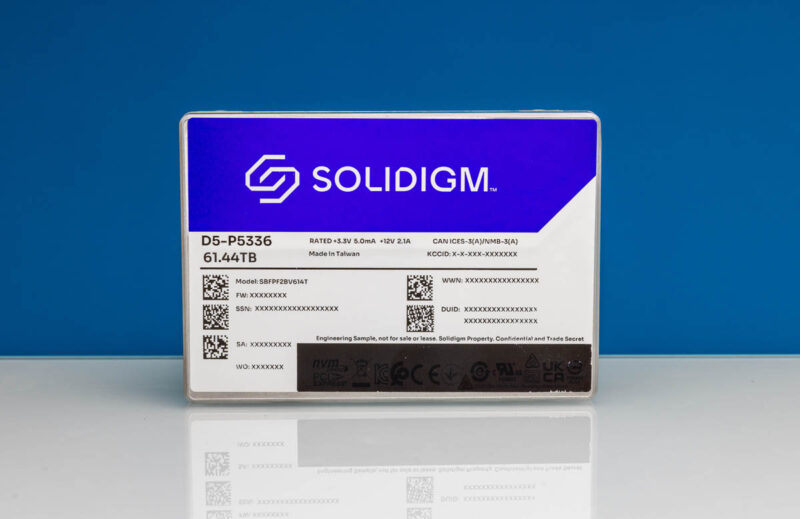
We previously went over the specs for the Solidigm D5-P5336 and have a full set of specs there. Still, Solidigm is making this drive using QLC NAND. QLC NAND, just like the TLC and MLC NAND transitions before, has higher density but lower performance and P/E cycle ratings than lower-density units. At the same time, Solidigm is doing something different, it is going large.
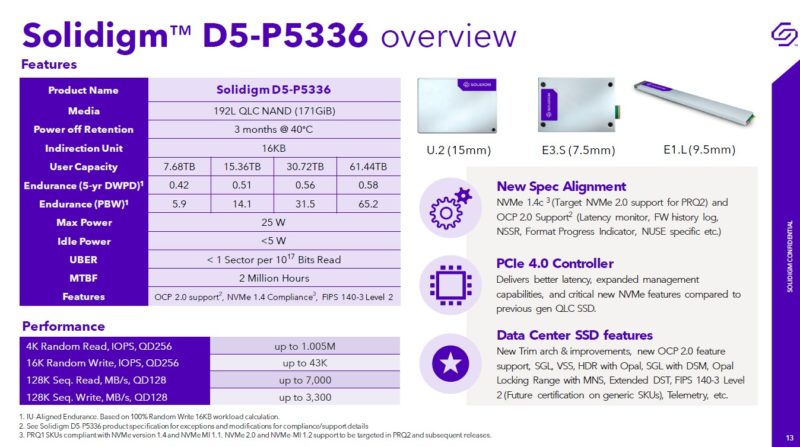
Since this drive is 61.44TB the 0.58 DWPD rating may not seem huge. On the other hand, given the capacity over five years it means 65.2PB can be written to the SSD. That is important since this is aimed at a new segment. Instead of this being aimed at a performance segment, it is really aimed to transition high-capacity workloads to SSDs instead of HDDs. Instead of thinking about this as a write log device, a high-performance database SSD, or other application thirsty for absolute speed, consider video and image storage. This is denser than hard drives. There are no moving parts, so it can be more reliable. For sequential reads, it is still fairly fast. On the random write side, QLC makes the drive comparatively slower than many other SSDs we see. That is really the point.
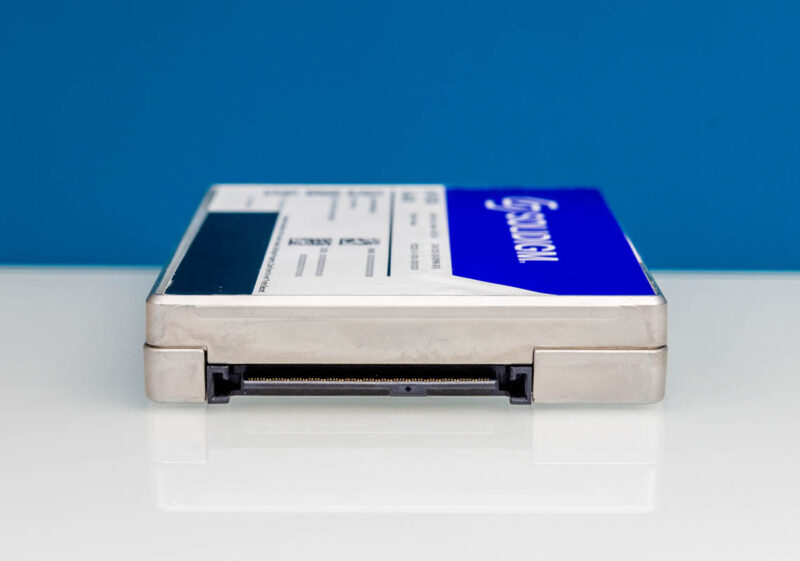
The 2.5″ drive we are looking at today (there are also EDSFF E3.S and E1.L versions) is the top-end 61.44TB SSD. This is the largest we have looked at so far.
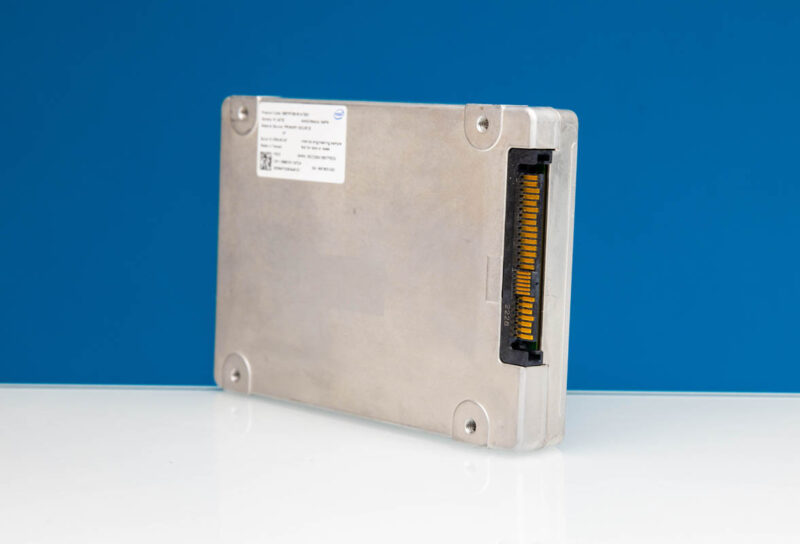
Even though the capacity is massive, it is still just a normal 2.5″ SSD. Here is the other side of the drive.
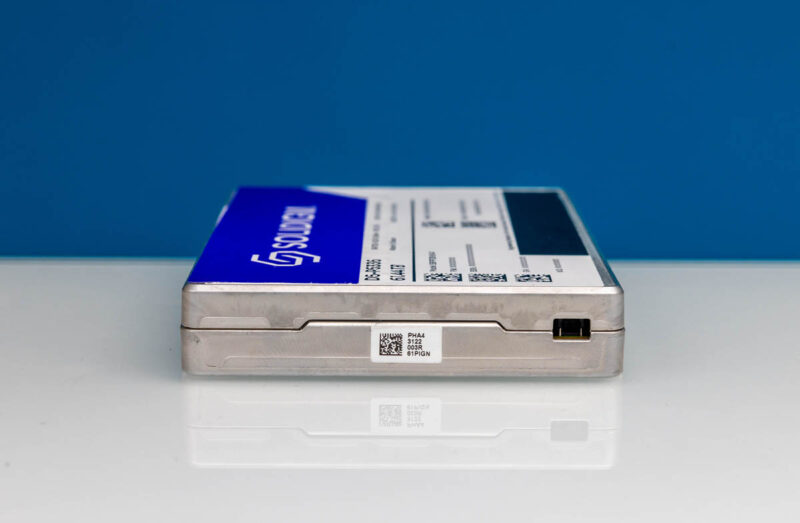
If the label looks a bit off, we re-labeled this drive ourselves while testing the drive.
Next, let us take a look at performance.

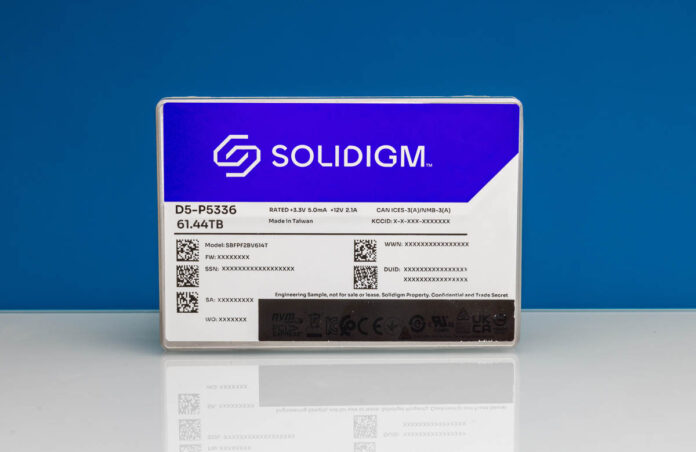


“Still, driving around with the setup we saw the first 10TB drive on the way up to Sedona, AZ in well under 500 miles of travel.”
You saw the first 10TB drive on the way? I would have thought you would see it when you installed it in the qnap before you left. Perhaps you mean you “…saw the first 10TB drive **fail** on the way…”
How can you review something across three pages without even mentioning even a ballpark figure for the price!?
Because it’s nearly $8000 and the terms of the review agreement probably stipulate they’re not allowed to share that.
I picked up one of these in December 2023 for $3700. Now that the cost of NAND has spiked they seem to be around $6400.
Ah, these are actually running PLC in pQLC mode.
Yikes.
I’m addition to price information for the SSD discussed here, I’d like to see some discussion of prices for the ASRock Rack 2U1G-B650 review last week. Why does a website devoted to server hardware have a dozen reviews of near identical 2.5 Gbit switches with prices and buy now links but no price-performance information for any of the server hardware?
Any reason for SOLIDIGM for not moving to U.3? I suppose this SSD is still U.2, which means it’s not supported by hardware RAID.
Whereas U.3 is supported by many new trimode hardware raid cards
These drives are meant for use cases where data availability/redundancy are handled somewhere else (CDNs, object storage, etc).
@Olimjon
U.2 is supported by hardware RAID. Its still PCIe.
9560-8i is specifically U.3 but supports U.2… why? Because U.2 PCIe backplane is still PCIe.
I spotted one of Patrick’s Easter Eggs: “outlets that can stay powered on while driving, so we though it might be interesting” – though instead of thought. (I never used to comment on these as I thought they were just typos, but once Patrick inserted some typos intentionally and then was surprised that hardly anyone noticed – so now I figure we are supposed to point them out just in case.)
Like @michaelp I was also wondering about why you would see the 10TB drive half way into the trip, wasn’t it there from the beginning?
“Lost”?
Interesting, who would lost when we compare the price lol
Why Threadreaper 7000WX, especialy thredreaper, is so slow compared to EmeraldRapids or Bergamo cpus with nvme on your charts.? Any ideas Patrick?
That spec sheet – Power Off Data retention.. 90 days at 104f(40c). So one hot summer on a shelf in texas/arizona and your data is gone ?
First, how do you review high capacity drives without discussing the IU/TU/whatever. Is this drive using 4k, 16k, or 64k as the smallest transfer unit? The IOPS numbers are somewhat misleading if you’re not showing off the drive’s strengths.
Secondly, when are you going to use enterprise benchmarking practices instead of consumer ones? There’s no way I’d go to you for industry analysis if you can’t even properly test a basic enterprise storage device. Seriously, CrystalDiskMark has no place in a review for enterprise storage.
Finally, how much Tesla stock do you own and are the Cyber Truck mentions paid for?
Terry Wallace wrote “That spec sheet – Power Off Data retention.. 90 days at 104f(40c).”
Thanks for posting. I was wondering what the power off data retention times were like. Given how malware and human errors affect online backups, it seems the world needs a modern media that can be shipped around in trucks and stored off-site.
After all the 2.5 Gbit switches have been rounded up, I’d vote for a focus on offline backup media.
@John S
What tools are you using to benchmark business SSDs?
Actually curious.
FIO on Linux. Windows can use vdbench or iometer, but enterprise storage is mostly Linux.
For synthetic tests you want to test the standard 4 corners. Also look at large block writes concurrent with small block reads and focus on the QoS numbers (eg: 99.999% latency on reads). With the new very high-capacity drives I would test IOPS at increasing sizes of IOs to see how it scales as most applications that will use these will already be tuned to do larger IOs since they’re applications migrating from HDD.
FYI, the driver and block level differences between windows and Linux are pretty big. Only testing on Windows also prevents you from collecting enterprise-worthy data.
I would recommend testing applications too. RocksDB (YCSB) / Postgres or MS SQL (TPC-C & TPC-H via hammerDB) / Cassandra (YDSB) / MySQL (sysbench) / various Spec workloads.
@CW Was it a retail purchase, or under some corporate agreement or something like that?
“Since this drive is 61.44TB the 0.58 DWPD rating may not seem huge”
For perspective, 0.58 DWPD would mean the drive sat writing at over 400MB/s continously 24/7.